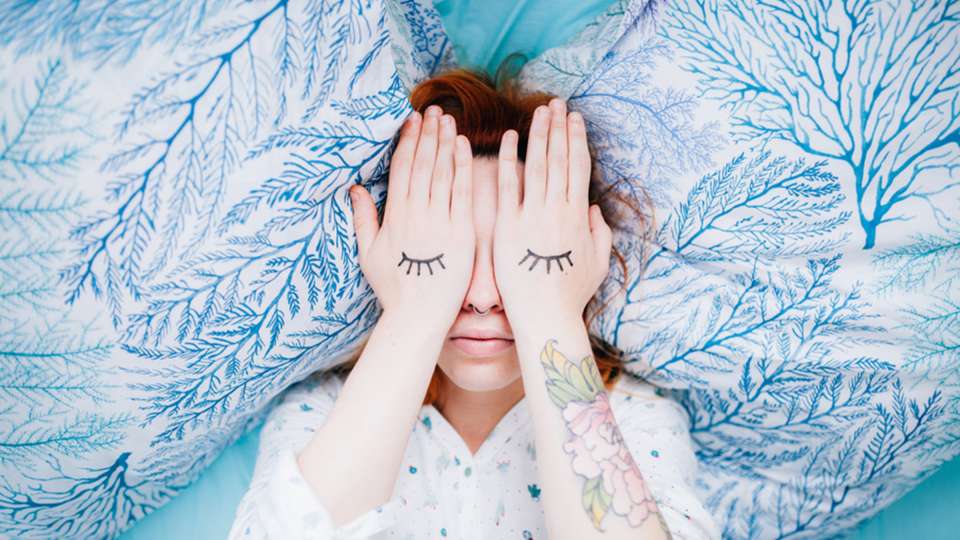
They say the eyes are the window to the soul, but are you treating them that way?
Taking care of your eyes to avoid eye problems down the road isn’t complicated, but it’s easy to slip up. Avoid these common mistakes and be on your way to better eye health today.
Forgetting to blink
You may notice your eyes feeling dry after staring at a screen for a long time. That’s because tasks that require concentrating for long periods of time, like computer work or reading, can cause your blink rate to get slower without you even noticing. When you don’t blink often, your eyes can dry out and feel tired, explains ophthalmologist Russell Van Gelder, M.D., Ph.D., director of the UW Medicine Eye Institute.
Try making a point to blink more often while you’re working or reading. The best way to help eyes that are already dry or irritated is to use preservative-free artificial tear drops, which can be purchased over the counter.
Sometimes, eye irritation that you think might be work-related can actually be a sign of inflammation of the eyelids or eyelashes. The technical term for this is blepharitis, and it’s incredibly common, Van Gelder says. Blepharitis can be associated with dry eyes, skin conditions such as rosacea, low level eyelid infections or mites (gag).
“One of the grosser facts out there is that a substantial portion of people have a skin mite that lives in the base of the eyelashes, and those can be very irritating and create a feeling of eye irritation,” says Van Gelder.
Skipping eyelash hygiene
Unless you wear mascara and you’re vigilant about always washing it off, you probably don’t really clean your eyelashes. But if you have blepharitis, or you’re just interested in making your eyes feel a little better, you should be giving your eyelashes some more love.
“Everybody shampoos their hair regularly and everyone brushes their teeth regularly, but almost no one cleans their eyelashes in any way,” says Van Gelder.
To clean your eyelashes and eyelids, place a warm washcloth over your eyes for a minute to open the pores. Then, create a lather of baby shampoo and water in your washcloth and use it to scrub the base of your eyelashes, which will help remove oil and bacteria. Van Gelder says he recommends people with symptomatic blepharitis do this twice a day. Everyone else should make it part of their bedtime routine a couple times a week.
Wearing your everyday sunglasses on high-altitude hikes
You probably already wear sunglasses when you’re hiking on sunny days. But you’ll need extra protection when you’re at high altitudes.
“When you’re at altitude you lose some of the filtering effects of the atmosphere and ultraviolet rays become much stronger,” says Van Gelder.
In particular, mountaineers who are on glaciers where there’s a tremendous level of reflection, need glacier glasses. These can be purchased at most outdoor retail stores and are generally an order of magnitude darker than regular sunglasses, he explains.
And what about those times when you’re wearing sunglasses but the sun still makes your eyes water?
“Even though the eyes may be uncomfortable under the sunglasses, most sunglasses today will filter 99.9 percent of UV rays, so your eyes are safe even if you’re feeling like it’s still a little bright,” says Van Gelder.
Thinking you don’t need safety glasses
One thing Van Gelder says ophthalmologists find frustrating is people’s reluctance to wear eye protection in situations where their eyes may be at risk.
“At Harborview Medical Center, we see about 130 to 140 eyeballs that are ruptured every year. Many of those people don’t end up getting good vision back, and a large proportion of those cases could have been avoided with simple protective eyewear,” Van Gelder says.
If you’re working in a wood or metal shop, mowing the lawn, using gardening tools, riding an ATV, skiing, or in any other environment where there’s a possibility of anything at high speed hitting your eyes, it’s a good idea to wear eye protection.
Forgetting to schedule regular eye exams
If you don’t wear contact lenses that need a new prescription every year, it’s easy to let eye exams fall off your radar. It’s not a bad idea for anyone to get an annual exam, but official recommendations kick in once you turn 40, which is when early signs of eye disease and changes in vision often occur.
Diseases like glaucoma, which can lead to serious vision problems, don’t have symptoms until it’s too late and the damage is done, says Van Gelder. That’s why the general recommendation is for anyone over 40 to get a dilated eye exam with an eye care professional every two years. If you have a family history of significant eye disease or a healthcare provider has told you that you are in a high risk group, it’s important to have an annual eye exam.
And yes, that means you’ll have to deal with huge dilated pupils that feel a little funny for a few hours. While some practitioners now offer taking a retinal photograph instead of dilation, Van Gelder recommends having the full dilated examination.
“We don’t have the data yet to say that a photograph is an adequate substitute for a full dilated exam. There are some pathologies that just can’t be captured well in a picture, like peripheral retinal breaks or tears,” he says. “It’s like any other health maintenance thing. It’s a pain to do and it’s not the most comfortable thing in the world, but your eyes are worth it.”

 Healthy ideas for your inbox
Healthy ideas for your inbox





